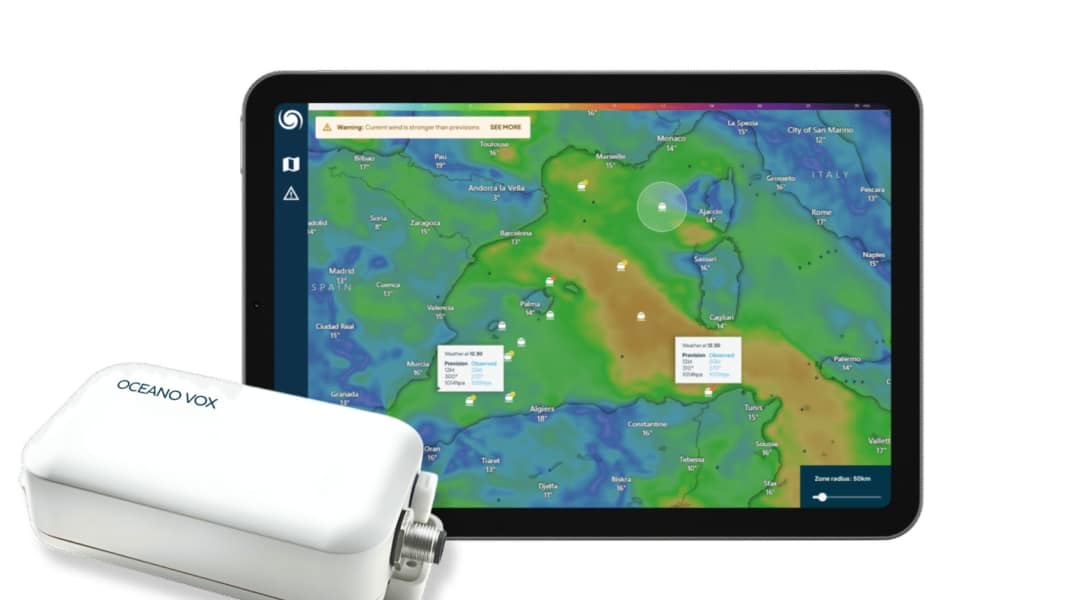
The Oceano Vox system transforms every participating boat into a floating measuring station. Using a plug-and-play device, yachts continuously transmit sensor data from the NMEA 2000 network, such as wind speed and direction, as well as water and air temperature. This data is shared in real time with other boats and scientists - an advantage for their own safety and for ocean research.
Comparison of forecast and real-time data
A central feature is the comparative visualisation of the weather data: skippers not only receive the current forecasts, but also real measured values from other boats in their vicinity. If the forecast and reality differ significantly, the system automatically sounds an alarm and enables quick course corrections and better decisions in the event of weather changes.
Oceano Vox is intended to go beyond the needs of individual sailors. The data collected will help to develop models, reduce risks for sea and harbour operations and increase the performance of AI systems for climate and ocean observation. Every voyage thus becomes an active contribution to research and the protection of the oceans.
Collect and share data
The Oceano Vox system consists of hardware and software. Weather Vox is a box that is connected to the on-board network and transmits boat data. The box can be pre-ordered for 149 euros. The regular price will be 199 euros. The data is transmitted via a mobile phone network or satellite connection. In addition to conventional weather forecasts and real-time data from other boats, the Oceano Vox service also offers short-term weather updates every 15 minutes, which are generated using real-time data for system users and AI weather models. An annual fee of 29 euros will be charged. Oceano Vox launches in January 2026.
How reliable are your own measured values?
However, a healthy dose of scepticism is always appropriate with systems that use community data. This is because the sensors on the various yachts may not all be calibrated correctly. If, for example, the logger is set incorrectly or its readings are falsified by vegetation, all other data on which the boat speed is based will also be incorrect. This applies in particular to the wind speed. The true wind is calculated from the apparent wind and the boat speed. As wind speed is a key variable for weather forecasting, an error here can have a particularly disruptive effect.
